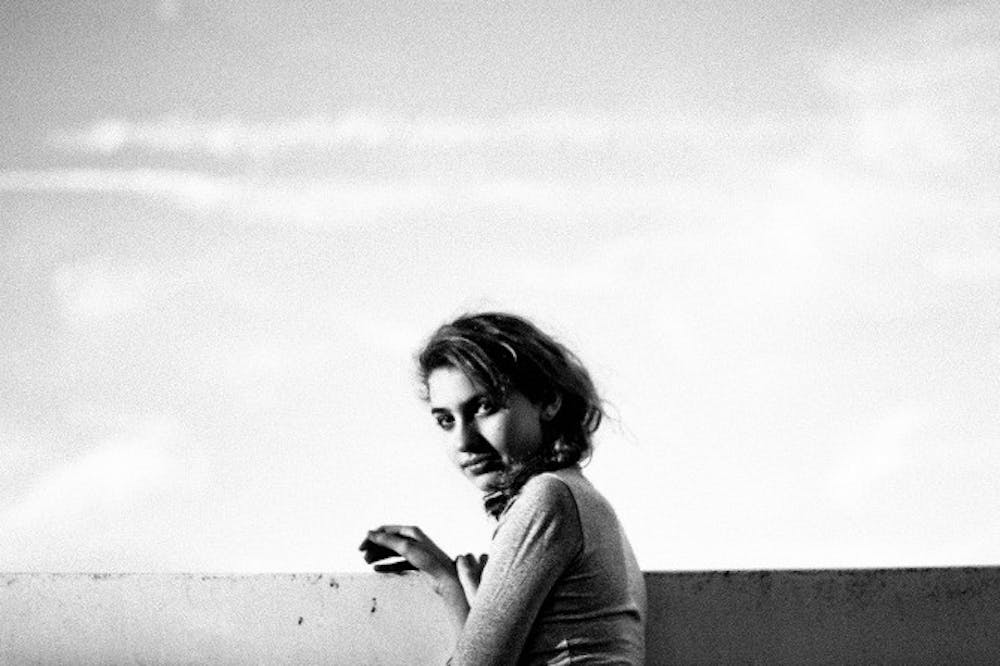Name and Year: Bonnie Arbittier, C’14 Hometown: York, PA Major: Fine Arts (French Minor) Website: www.cargocollective.com/bonniearbittier
Street: When did you first pick up a camera? What drew you into photography as an artistic medium? Bonnie Arbittier: I got my first DSLR as a present from my family upon my high school graduation. I distinctly remember tearing up—they had all chipped in, and photography was transitioning from a hobby to a huge passion of mine. Until that point, I had been experimenting with a point and shoot. I never took any photo classes but was extremely drawn to the medium. I had always loved creating concepts and playing them out in front of the lens. From my first capture, I always photographed people, never objects or places. I loved how the camera could capture a person, but could also be misleading.
Street: What drew you into commercial and fashion photography? BA: At first, it was my goal to imitate the great fashion photographers whose work I poured over in Vogue. As I got older, however, I realized I was more drawn to more “off–the–wall” work: Jeurgen Teller, who shoots the Marc Jacobs ads, was a huge inspiration. I realized I could work in the fashion realm of photography but create something a little more interesting than just a pretty picture. This is what my work has been transitioning into. While I would love to work in the commercial fashion photography world, I am now leaning more towards the gallery world where I can display my own work that is subtly about fashion.
Street: What’s it been like exploring more documentary types of photography? Is this a direction you’re interested in long–term? BA: This summer, I had the pleasure to meet one of the most famous living photojournalists in New York: Ron Haviv. His stories made me want to give photojournalism or documentary photography a try, and I got the chance this past August by going to Jamaica to photograph and teach a photography course in Tivoli. This was a haunting and beautiful experience, for Tivoli is known by the world for its massacre in 2010 and the stories surrounding Christopher Coke. Our goal was to uproot these stories and show the world, through photography, what beauty could exist in Tivoli and what truly happened in 2010. While this experience was life–changing and fascinating, and I will be going back two more times this coming year (and we will be putting on a show of the children in Tivoli’s work in May at the Penn Museum!), I am not sure if I could see myself doing this type of work as my career.
Street: Give us an example of a favorite recent project. BA: I was just published on Roads and Kingdoms (voted 2013 America’s Best Travel Journalism Site) (link: http://roadsandkingdoms.com/2013/the–rat–hunters–of–new–york/) for a story I photographed on dogs hunting rats in New York City this summer. I could see myself doing more of this kind of documentary work as a freelancer. I loved the adventure, the uncertainty and the reporting of such a non–talked–about experience.
Street: You have worked for artist Michael Kalish in Los Angeles and interned with photographer Annie Leibovitz in New York. What were some of the highlights of those experiences? BA: As a girl from a small Pennsylvania town, these experiences opened up my world. I loved talking to people in the art world and getting to know what it is like to be immersed in this type of career. I have made amazing friends from these experiences. In working for Michael Kalish, I did a lot of welding and cutting metal for his sculptures. In working for Annie, I got to do a lot of photo research for upcoming shoots. Both experiences were so different but so valuable.
Street: What do you like about freelancing? BA: I do not know if I could freelance for a living (it can get tough making your own schedule constantly!), but I love the fact that it allows you to meet so many types of people. I have freelanced everything from lookbooks to displays in Penn Dental to those rats in New York City. You get exposed to little stories in the world that you would never know existed if you didn’t take part as the photographer or designer.
Street: Pick one: traditional black and white photography or digital? Why? BA: The aesthetic of film, and the convenience of digital! My favorite photographers were all film photographers (Nan Goldin, Larry Clark, Robert Mapplethorpe), and I am constantly looking towards their aesthetic for my photography. The only problem nowadays is that film is so expensive. For the time being, all my work is digital.
Street: When you look back on your Penn experience in 10 years, what will stick out in your memory? BA: It may sound generic, but the people I have met and the experiences I have made. Every experience that has been out of my comfort zone has contributed to my photography. For my senior thesis, I am working on a series of connecting back with past romantic relationships to examine subjective and objective experiences. I am constantly photographing those around me, working a lot from the inspiration of Nan Golden’s series The Ballad of Sexual Dependency, where she photographed those closest to her so the viewers feel like they know her friends.







